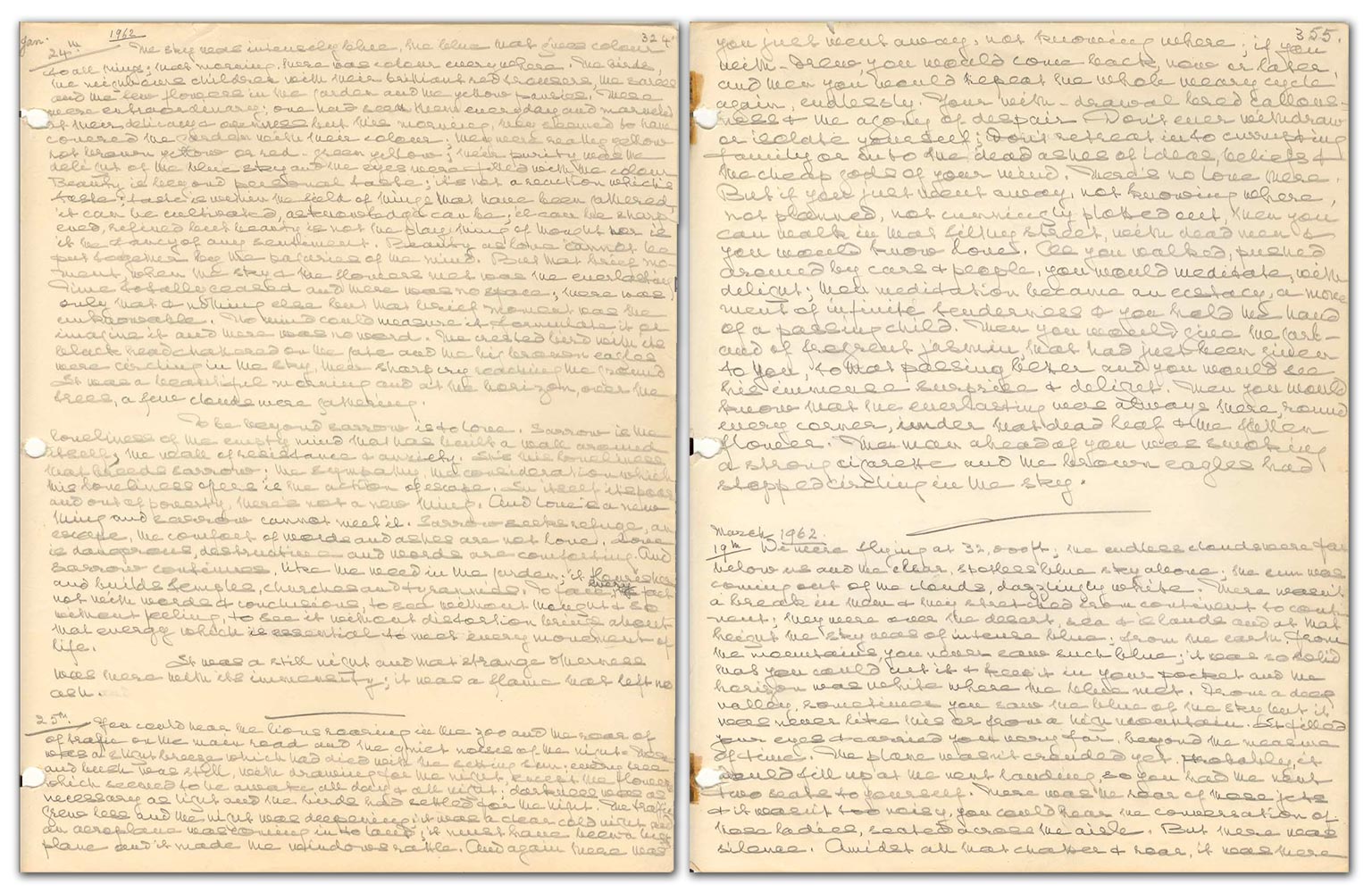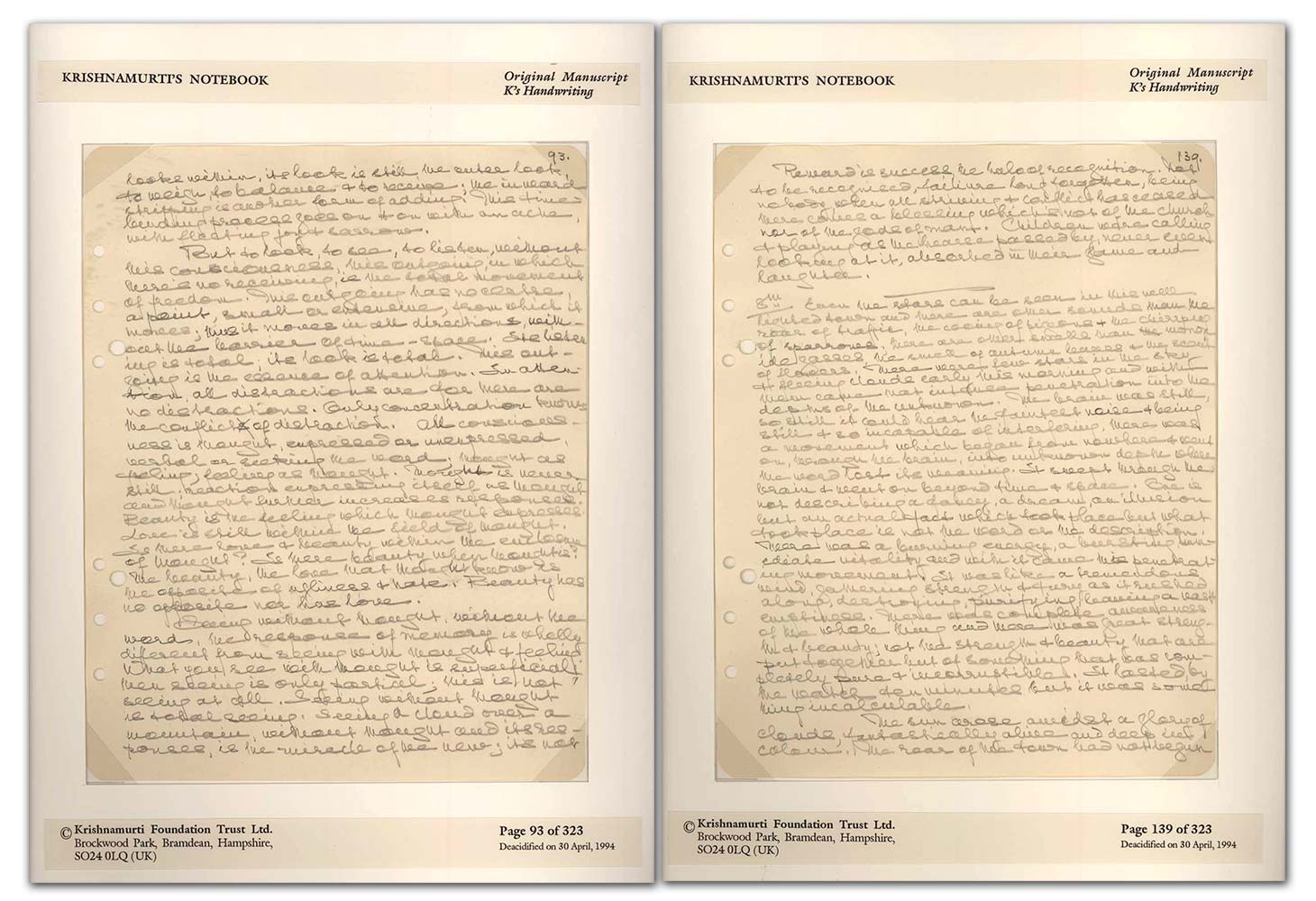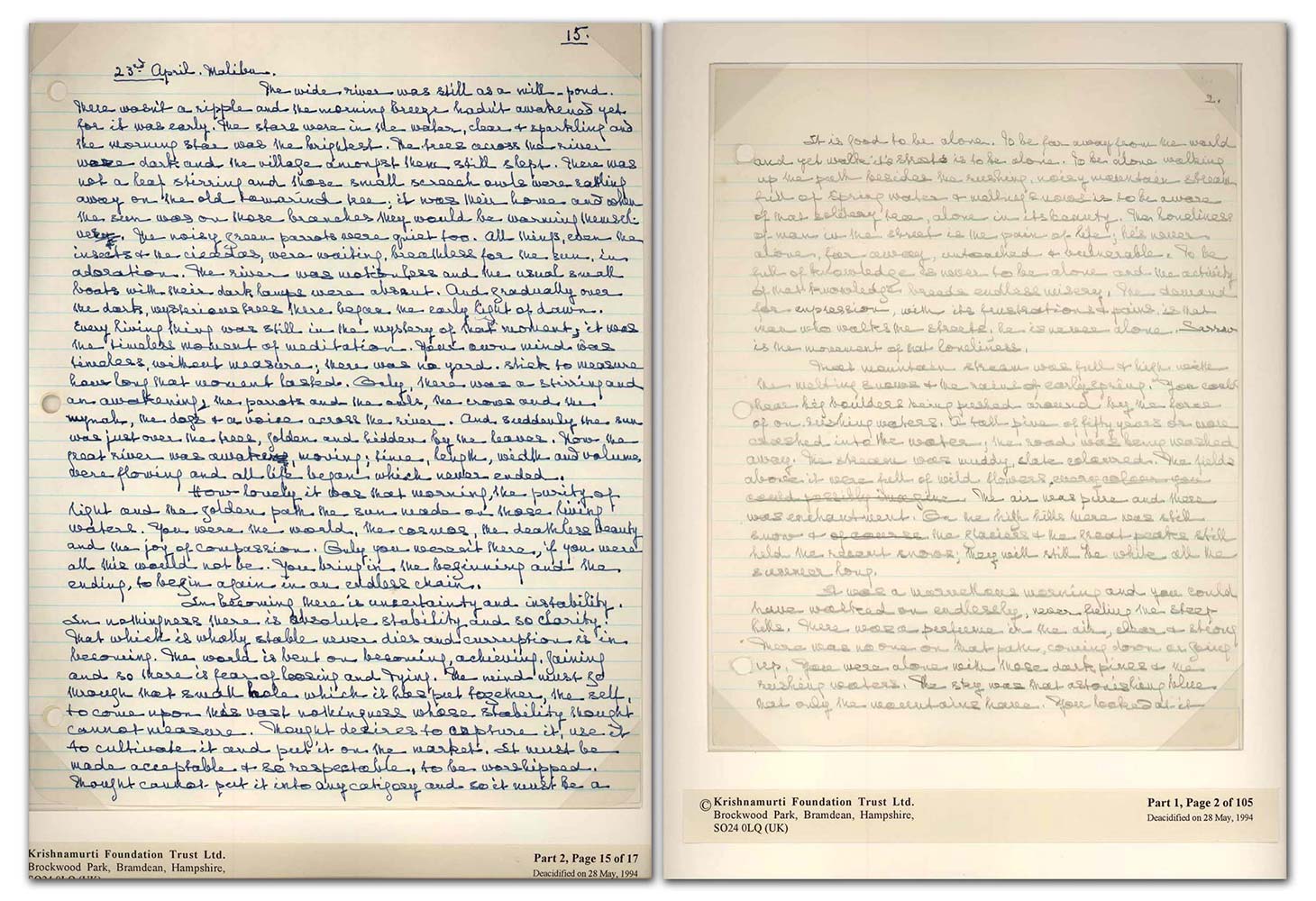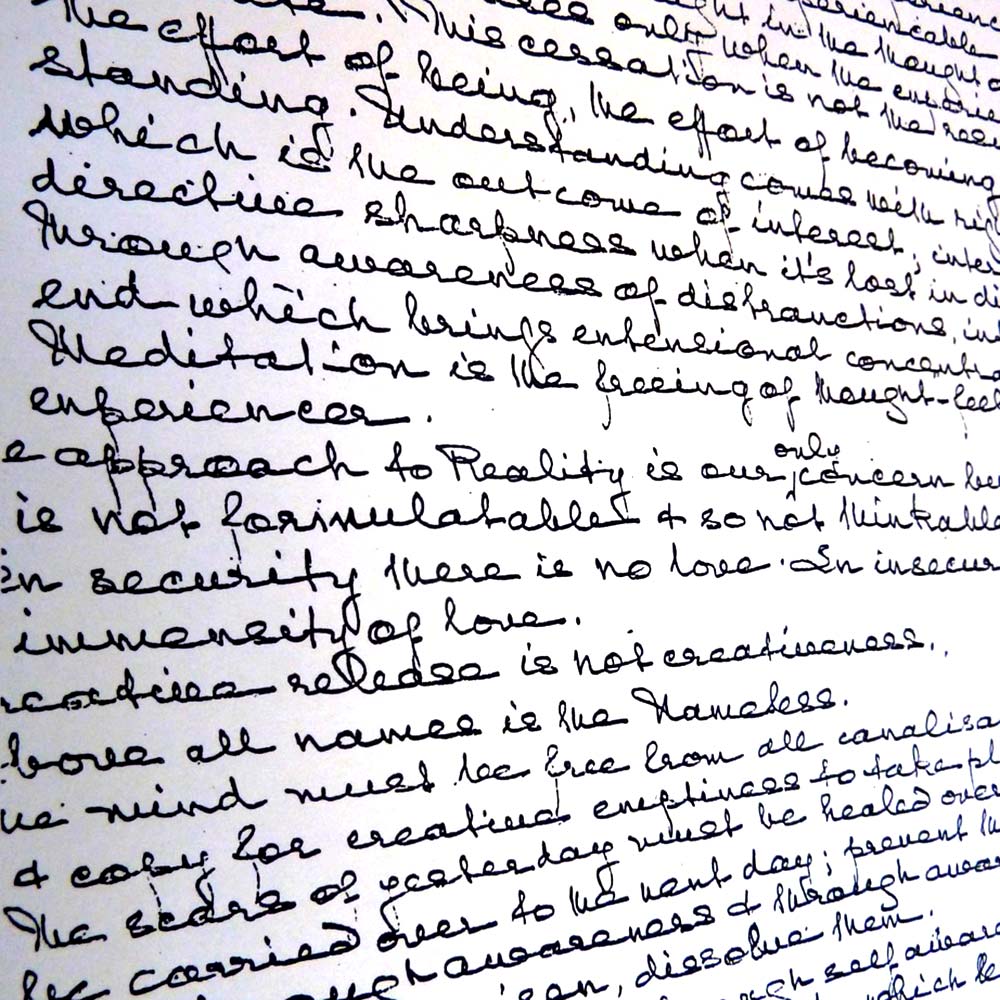The majority of published material by Krishnamurti has been sourced from his hundreds of public talks. Two noticeable exceptions are Krishnamurti’s Notebook and Krishnamurti’s Journal. These have become classic books, the former perhaps his most personal and ‘mystical’ book, giving the reader a glimpse into Krishnamurti’s inner life and ‘The Process’. But what are the origins of these well-known books? Here we share some information about the handwritten manuscripts and some examples of their pages.
The sources of these books were Krishnamurti’s literal notebook and journal, written in the early 1960s and 1970s, respectively. In an interview with The Guardian about the notebook, Krishnamurti said:
I wrote it as a diary while I was travelling… but I did not write it for publication. I describe what I call the process—my sensation of being outside the ordinary world, of being completely at peace and removed from conflict. This happens only from time to time and clearly it is impossible to describe to anybody who has not experienced it. But I have attempted to put into words the actual pain and sensation which goes with the heightened consciousness.
It is not intended in a romantic way: if you lead a certain type of disciplined, quiet life you release a kind of energy—that is a scientific fact—and this affects the non-mechanical part of your brain so that you enter into a new dimension. The physical organism is incapable of meeting it and so you get the pain.
I am not suggesting that everyone should try to attain this, but it may be of interest to some people who have followed my thoughts and ideas to know what happens on a more personal level.
The emphasis of the Journal is perhaps more outward, with many of Krishnamurti’s much-loved descriptions of nature, with an emphasis on the beauty in the world, a beauty that is in danger of being lost due to the actions of humanity. These actions and universal problems are addressed in his recollections of private meetings with some of those who came to see him over the years, accounts of which are included in the book, along with Krishnamurti’s encounters with tigers, snakes and other wild animals.
The original pages of the notebook and journal are carefully preserved in the Krishnamurti Archives within the Foundation at Brockwood Park. Each sheet has been deacidified and mounted on acid-free board and housed in a fire-proof cabinet. This preservation process, along with the manuscripts being kept at a stable temperature and humidity in the archive vault, will ensure that the paper will last centuries. During this century, the major task of the archives has been to digitise everything held in the vault, from the original videotapes to photographs to these unique handwritten pages, further preserving them and making them accessible to researchers.
Krishnamurti’s writing, often in pencil, is not the easiest to read, but once one ‘tunes into it’, its timeless quality and treasures are revealed. As Mary Lutyens put it in the Foreword to the Notebook:
In this unique daily record, we have what may be called the well-spring of Krishnamurti’s teaching. The whole essence of his teaching is here, arising from its natural source. Just as he himself writes in these pages that ‘Every time there is something ‘new’ in this benediction, a new quality, a new perfume, but yet it is changeless’, so the teaching that springs from it is never quite the same although often repeated. In the same way, the trees, mountains, rivers, clouds, sunlight, birds and flowers that he describes over and over again are forever ‘new’ because they are seen each time with eyes that have never become accustomed to them; each day they are a totally fresh perception for him, and so they become for us.
The book Krishnamurti’s Notebook is available to buy here.
The book Krishnamurti’s Journal is available to buy here.





